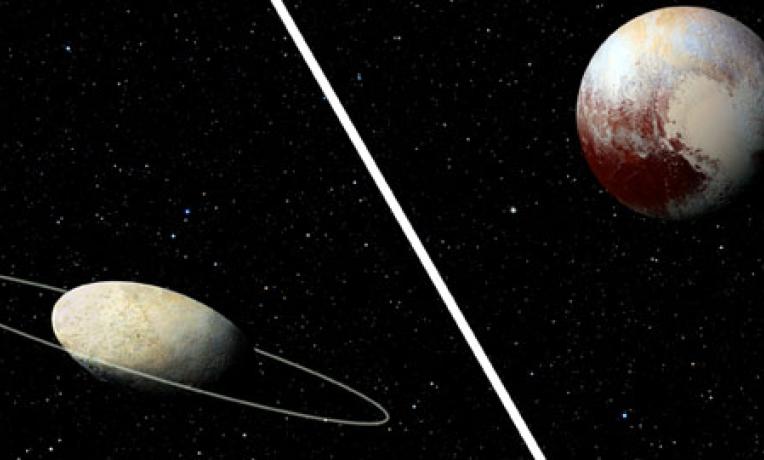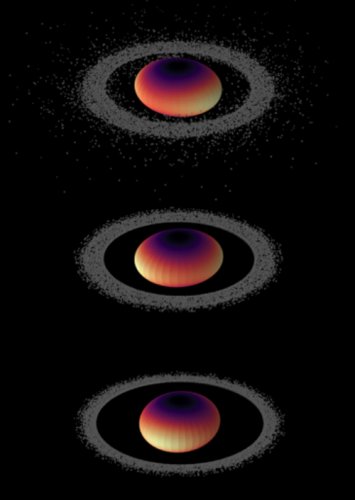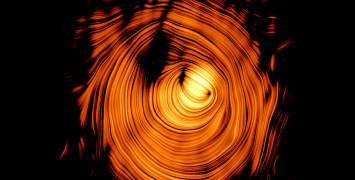Haumea, the dwarf planet reveals its ring
First published on 09-10-2017
Updated on 18/12/2018
Beyond the orbit of Neptune, there is a belt of objects composed of ice and rocks, among which four dwarf planets stand out: Pluto, Eris, Makemake and Haumea. Because of their small size, low reflectance, and far distance, these trans-neptunian objects are difficult to study and remain partly mysterious. A group of astronomers supported by the EU report on their unexpected finding on Haumea.

"Haumea was discovered in 2004, but it is still the least understood of the four dwarf planets", explains Bruno Sicardy, one of the astronomers that played a key role in this study and funded by the ERC. "We knew that Haumea takes 285 years to rotate around the sun and that its ellipsoid shape is similar to a rugby ball. What we didn't know, nor expect, is that its longest axis is almost as long as Pluto’s diameter and that it has a dense ring around it.”
Their conclusions are based on complex prediction models partly made in Brazil and several observations of a stellar occultation from several European countries last January 2017. "We can infer the density of a planet, its size or the presence of a ring by observing how it blocks the light of a certain star when passing ahead,” explains Sicardy. The researchers, led by Dr José-Luis Ortiz, arranged an observation of Haumea from twelve telescopes in ten different European observatories.
A ring of frozen particles
“We discovered the presence of a dense ring around the dwarf planet, which we estimate with a 2290 Km in radius, 70 Km width and with a 50% opacity,” Sicardy continues. “It is composed of frozen particles that rotate around Haumea three times slower than the dwarf planet rotates around its own axis.”
Video: A ring around Haumea
Rings are generally associated with giant planets such as Saturn but Haumea, as small planetary body of the solar system, may prove the contrary as did Chariklo – one of the asteroid-like objects known as Centaurs that orbits between Jupiter and Neptune. Sicardy and his team were already behind the observation of Chariklo’s rings, back in 2013. Haumea is the first body outside the population of Centaurs that has a ring. The discovery shows that the presence of rings could be more common than was previously thought, in our Solar System as well as in other planetary systems.
The origin and stability of Chariklo and Haumea's rings remain open questions. The presence of satellites around Haumea suggests a collisional origin for this newly discovered ring. Moreover, the very elongated shape of Haumea is likely to cause strong resonant perturbations on a collisional disk around Haumea. This might explain why the ring is relatively far away from the central body. These hypotheses must now be confirmed by further theoretical work.
In a letter published in Nature Astronomy, Prof. Sicardy's team showed that Chariklo's and Haumea's rings are strongly coupled with the bodies they surround. Their observations opens a new playground for theoreticians to better understand on how planetary rings, such as Saturn's, work and evolve.
 © Rodrigo Leiva. A numerical integration shows the evolution of 700 particles orbiting an ellipsoid around Chariklo. The particles are submitted to a dissipative force that simulate collisions. After 3 months (upper panel), most of the particles inside the synchronous orbit (about 20% outside Chariklo’s largest axis) have fallen onto the body. After a year (middle panel, all the inner zone has been cleared, and after twelve years (lower panel), the particles continue their outward migration.
© Rodrigo Leiva. A numerical integration shows the evolution of 700 particles orbiting an ellipsoid around Chariklo. The particles are submitted to a dissipative force that simulate collisions. After 3 months (upper panel), most of the particles inside the synchronous orbit (about 20% outside Chariklo’s largest axis) have fallen onto the body. After a year (middle panel, all the inner zone has been cleared, and after twelve years (lower panel), the particles continue their outward migration.
This article is published in collaboration with the ERC Lucky Star project and project SBNAF.
Scientific publications:
Ortiz et al. (2017) “The size, shape, density and ring of the dwarf planet Haumea from a stellar occultation”. Nature, (2017) DOI: 10.1038/nature24051
B. Sicardy et al (2018) Ring dynamics around non-axisymmetric bodies with application to Chariklo and Haumea. Nature Astronomy (2018) https://doi.org/10.1038/s41550-018-0616-8
The team that published in Nature in October 2017 was supported by EU grant SBNAF under the Horizon 2020 programme. Prof. Sicardy, from the Université Pierre et Marie Curieand the Observatoire de Paris in France helped plan the stellar occultation observations, participated in the analyses and interpretation of data. His work has been supported by the ERC Advanced Grant LUCKY STAR since 2015.






